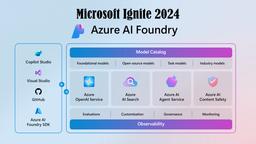Temperstack Features
Temperstack is an enterprise-grade proactive SRE platform that automates service catalogs, monitoring, alerting audits, and SLI reporting across observability tools to reduce toil and boost service reliability.
View MoreKey Features of Temperstack
Temperstack is an enterprise-grade SRE (Site Reliability Engineering) platform that automates service catalogs, monitoring, alerting audits, and SLI reporting across multiple observability tools. It provides a unified command interface for visibility, proactive issue detection, and collaboration across teams. The platform integrates with popular monitoring tools, offers incident management capabilities, and helps reduce SRE toil while boosting service reliability.
AlertIQ: Drives comprehensive alerting coverage and automates alert audits across multiple monitoring tools.
Config Engine: Conducts configuration audits and automates remediation to ensure consistent alerting policies across cloud environments.
Incident Command: Provides built-in incident management with features like on-call scheduling and escalation policies.
Multi-tool Integration: Integrates with popular monitoring tools like New Relic, Datadog, CloudWatch, and Azure Monitor for unified observability.
Auto Deploy: Enables automatic resource discovery and comprehensive monitoring setup, saving time for DevOps teams.
Use Cases of Temperstack
Streamlining DevOps for Growing Companies: Helps companies without dedicated DevOps teams achieve comprehensive monitoring and alerting coverage quickly and efficiently.
Multi-cloud Environment Management: Provides centralized control and orchestration for organizations using multiple cloud providers (AWS, GCP, Azure).
Microservices Architecture Monitoring: Ensures proper alerting coverage for new APIs in complex microservices architectures at scale.
Legacy System Migration: Facilitates seamless transition from legacy incident management solutions to modern capabilities without disruptions.
Pros
Easy setup with less than 5 clicks
Agentless solution requiring no infrastructure heavy lifting
Integrates with multiple cloud providers and popular monitoring tools
Provides 24/7 support from trained experts
Cons
May require initial learning curve for teams new to SRE practices
Potential dependency on third-party integrations for full functionality
Related Articles
Popular Articles

Black Forest Labs Unveils FLUX.1 Tools: Best AI Image Generator Toolkit
Nov 22, 2024

Microsoft Ignite 2024: Unveiling Azure AI Foundry Unlocking The AI Revolution
Nov 21, 2024

10 Amazing AI Tools For Your Business You Won't Believe in 2024
Nov 21, 2024

7 Free AI Tools for Students to Boost Productivity in 2024
Nov 21, 2024
View More

